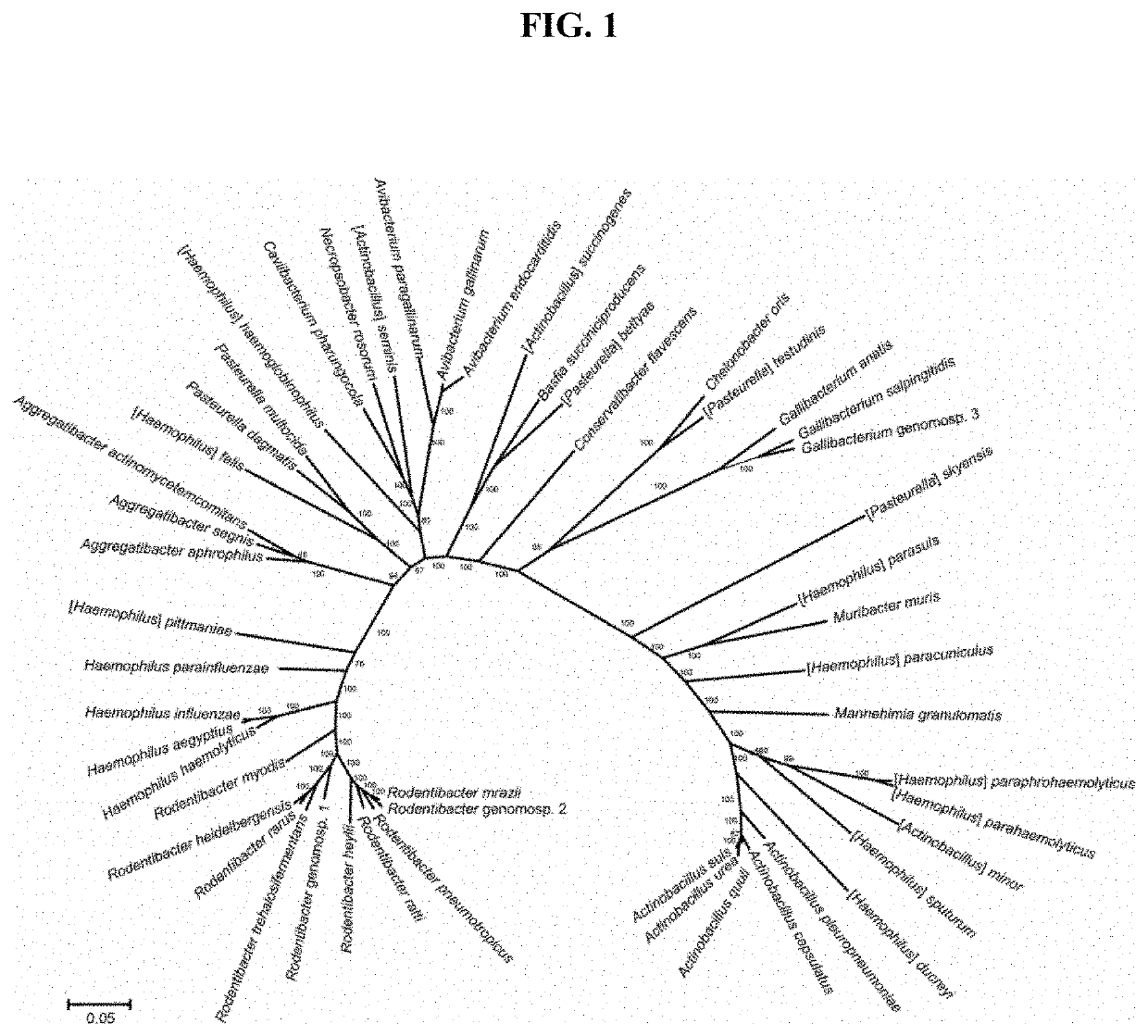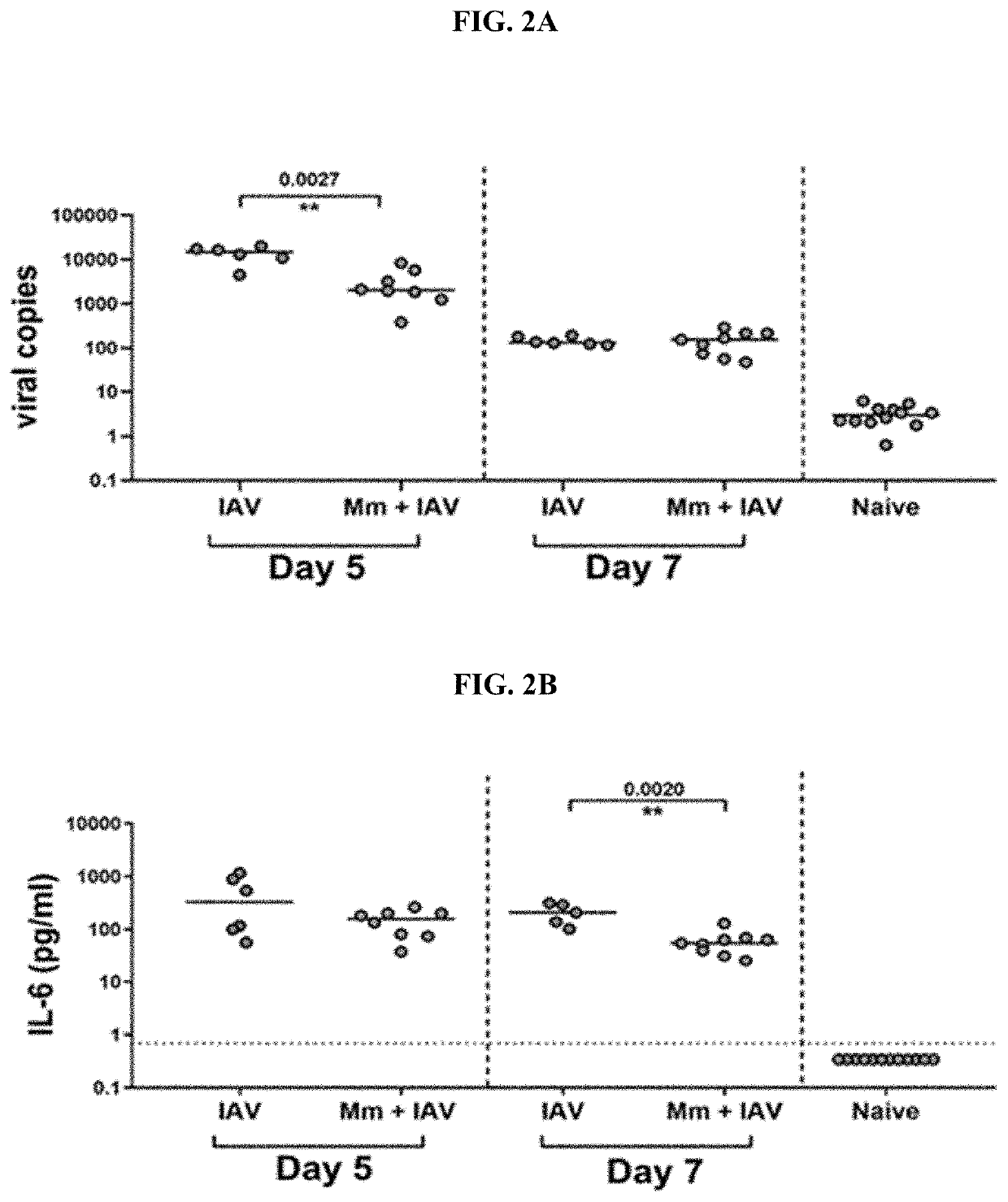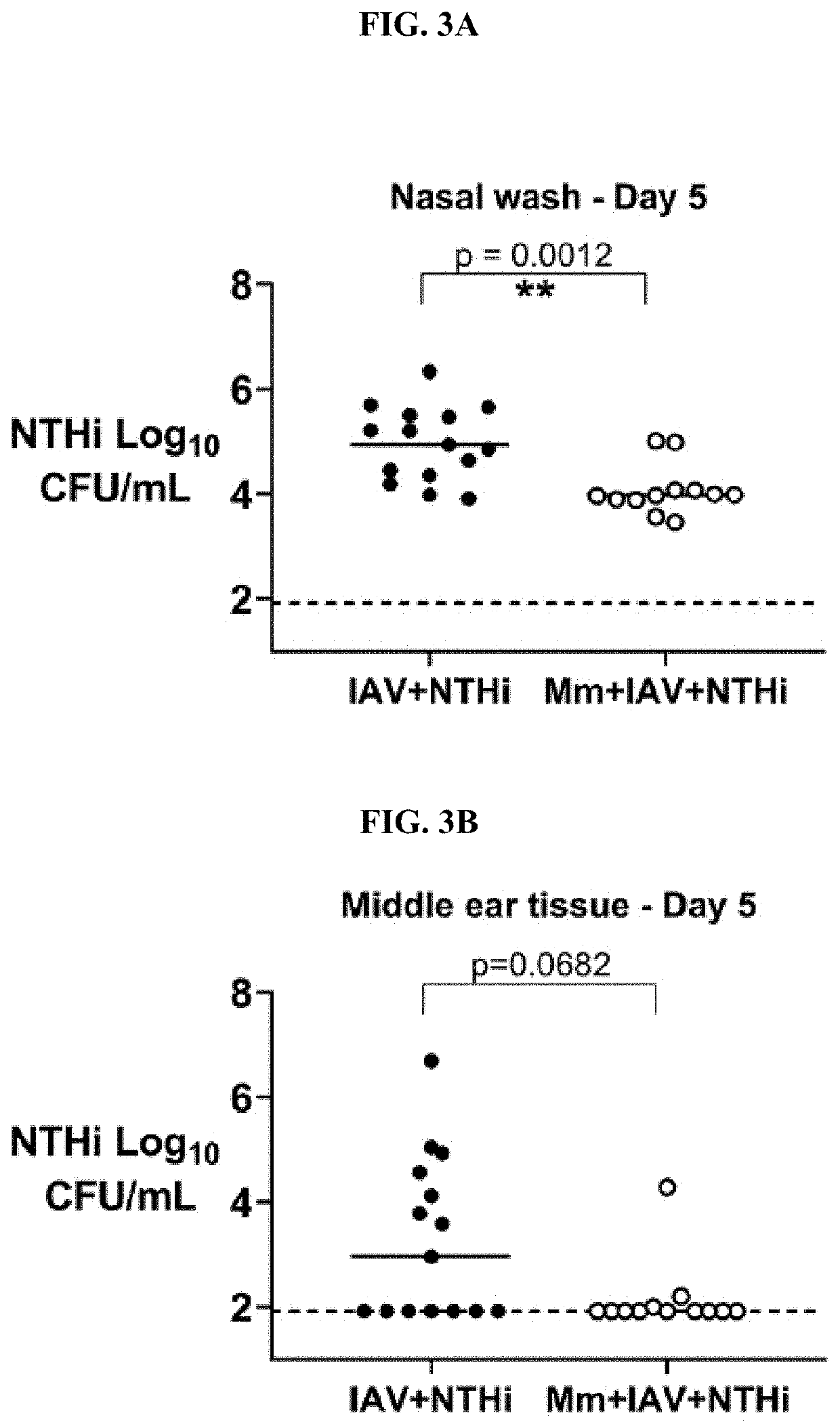Treating or preventing respiratory infection
a technology for respiratory infections and treatment, applied in the field of treating or preventing respiratory infections, can solve the problems of high manufacturing cost, low efficiency, and high cost of current vaccine use, and achieve the effect of reducing viral and/or bacterial titres and inflammation
- Summary
- Abstract
- Description
- Claims
- Application Information
AI Technical Summary
Benefits of technology
Problems solved by technology
Method used
Image
Examples
example 1
Materials and Methods
[0112]Sources of Microorganisms Used in this Study
[0113]Sources of microorganisms used in this study are detailed in Table 1 below.
TABLE 1Strains of microorganisms used in this study.SpeciesStrain (reference / source)Nontypeable Haemophilus influenzaeR2866 (Williams et al. 2001)Nontypeable Haemophilus influenzaeR2866 SpecR(supplied by Dr Jeroen Langereis)Influenza A virusA / Memphis / 1 / 71 H3N2(supplied by Alex Larcombe)Muribacter murisTKI (this study)Haemophilus haemolyticusH12 and H19(Kirkham et al. 2010)
Bacterial Inoculum
[0114]Standard inoculum of mid-log phase NTHi 2866 SpecR was prepared in 1 ml aliquots and stored as previously described (Kirkham et al. 2013), with the exception that 0.1 mg / ml spectinomycin was added to the culture medium.
[0115]M. muris was isolated from the respiratory tract of a mouse in our animal facility by plating a nasal wash onto chocolate agar plates and selecting Haemophilus-like colonies. Species identity of a selected isolate (M. mur...
example 2
[0127]Intranasal Treatment of Mice with M. muris can Reduce Influenza Titres in the Lungs
[0128]Intranasal pre-treatment of mice with a single dose of M. muris prior to challenge with influenza A / Memphis / 1 / 71 H3N2 virus resulted in reduced influenza titres in the lung by 10-fold on day 5 post influenza challenge, p=0.0027 (FIG. 2A). Pre-treated mice also had 10-fold lower levels of the innate immune signalling molecule interleukin-6 (IL-6) in nasal washes on day 7 post influenza challenge, p=0.0020 (FIG. 2B, and data also shown in FIG. 4A as these mice were the controls in the NTHi otitis media model: Mm+IAV and Mm only).
example 3
[0129]Intranasal Treatment of Mice with M. muris can Reduce NTHi Colonization and Prevent Development of NTHi Otitis Media
[0130]Intranasal administration of 5×107 CFU of M. muris to mice prior to challenge with influenza A / Memphis / 1 / 71 H3N2 virus (IAV) and NTHi (M. muris+IAV+NTHi group) reduced the NTHi density recovered from the nose of mice on day 5 from a median log 4.94 CFU / ml (95% confidence interval [CI] of median 4.36 to 5.50) to a median log 3.97 (95% CI, 3.88 to 4.08) when compared with that of no pre-treatment (IAV+NTHi group; PM. muris pre-treatment also prevented development of NTHi otitis media by day 5, with only 1 out of 12 (8%) M. muris-treated mice developing NTHi otitis media compared with 53% (8 / 15) of mice given no M. muris pre-treatment (P=0.019) (FIG. 3B). The median density of NTHi in the middle ear on day 5 reduced from median log 2.96 (95% CI, 1.92 to 4.56) to median log 1.92 (95% CI, 1.92 to 2.00) (P=0.068). By day 7, the impact of M. muris pre-treatment on...
PUM
 Login to View More
Login to View More Abstract
Description
Claims
Application Information
 Login to View More
Login to View More - R&D
- Intellectual Property
- Life Sciences
- Materials
- Tech Scout
- Unparalleled Data Quality
- Higher Quality Content
- 60% Fewer Hallucinations
Browse by: Latest US Patents, China's latest patents, Technical Efficacy Thesaurus, Application Domain, Technology Topic, Popular Technical Reports.
© 2025 PatSnap. All rights reserved.Legal|Privacy policy|Modern Slavery Act Transparency Statement|Sitemap|About US| Contact US: help@patsnap.com



